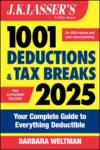Guidance on Coronavirus-Related Loans and Distributions from Retirement Plans and IRAs
The CARES Act provided numerous ways in which to handle loans and distributions from qualified retirement plans and IRAs for those impacted by COVID-19 who needed funds. The IRS has provided guidance on many of these rules (Notice 2020-50).
Eligibility for coronavirus-related distributions
These rules only apply to a qualified individual, defined by the CARES Act as one diagnosed with the virus, who has a spouse or dependent diagnosed with the virus, or who experiences adverse financial consequences as a result of being quarantined, unable to work due to lack of childcare, or being a business owner who closed or had reduced hours of business due to COVID-19. The CARES Act allows the IRS to add other situations for being a qualified individual, and in Notice 2020-50, the IRS expands the definition to include:
- An individual with a reduction in pay or self-employment income due to COVID-19 or having a job offer rescinded or start date for a job delayed due to COVID-19;
- The individual’s spouse or a member of the individual’s household (shares the same principal residence) has been quarantined, furloughed or laid off, or had work hours reduced due to COVID-19, or was unable to work due to lack of childcare due to COVID-19, or had a reduction in pay (or self-employment income) due to COVID-19, or had a job offer rescinded or start date for a job delayed due to COVID-19; or
- A business owned or operated by the individual’s spouse or a member of the individual’s household had to close or reduce hours due to COVID-19.
Special tax treatment for 2020 coronavirus-related distributions
You can designate a distribution made in 2020 as being related to COVID-19 if you are an eligible individual. Allowable distributions are included in income ratably over three years (unless the taxpayer includes it all in income in the year of the distribution) and are not subject to early distribution penalties.
Distributions that would otherwise qualify for rollover treatment can be recontributed to a retirement plan within three years beginning on the day after the date the distribution was received. Such a recontribution is treated as a trustee-to-trustee transfer. A distribution paid to a beneficiary (other than a surviving spouse) cannot be recontributed. Also, a hardship distribution that isn’t COVID-19 related cannot be recontributed. When recontributing a qualifying distribution, an eligible individual must file an amended return as well as Form 8915-E (a new tax form) to report the amount of the recontribution and reduce the originally reported gross income by that amount.
The cap on qualifying distributions is $100,000, but if more than this limit is received in 2020, an eligible individual can designate the COVID-19 portion.
Example: If a qualified individual age 50 receives a distribution of $50,000 in August of 2020 and a distribution of $75,000 in September of 2020 and both distributions satisfy the definition of a coronavirus-related distribution, only $100,000 of the $125,000 received by the qualified individual can be treated as a coronavirus-related distribution. Only $100,000 of the August and September distributions is treated as coronavirus-related distributions on the individual’s 2020 federal income tax return; the remaining $25,000 of the distribution is an early distribution that is subject to the 10% additional tax. This amount must be included on the individual’s 2020 federal income tax return and is not eligible for 3-year recontribution to an eligible retirement plan.
Certain distributions don’t qualify as coronavirus-related distributions:
- Corrective distributions of elective deferrals and employee contributions that are returned to the employee
- Excess contributions
- Loans treated as deemed distributions
- Dividends paid on employer securities
- The costs of current life insurance protection
- Prohibited allocations that are treated as deemed distributions
- Distributions of premiums for accident or health insurance
Section 179 deduction (or First-year expensing)
A deduction allowed for investments in depreciable business equipment in the year the property is placed in service.



